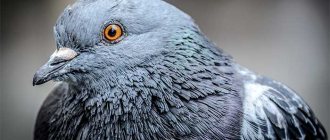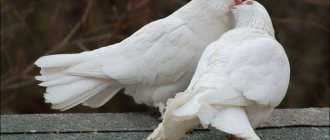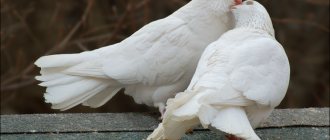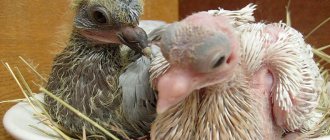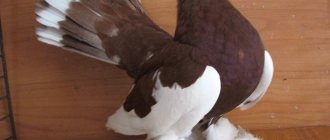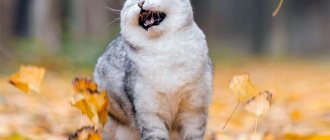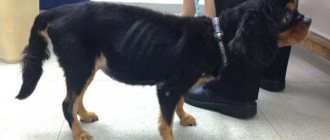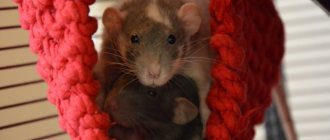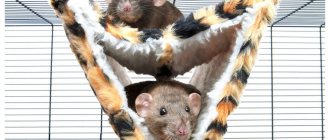They can be found everywhere: in city parks, on squares and sidewalks, in courtyards and even on the roofs of residential buildings. Pigeons have become such a familiar part of the urban landscape that if they suddenly disappeared somewhere, our cities would seem terribly empty without them.
Many people admire these faithful birds, while others harbor a grudge against these ubiquitous creatures and even say that they are worse than rats. But hardly anyone thinks about why there are so many pigeons in cities around the world and what is the role of humans in their colonization of our space.
It is estimated that there are more than 400 million pigeons in the world today, and most of them live in cities. But it was not always so. City pigeons as we know them today are descended from a wild bird known as the rock pigeon (Columba livia). As the name suggests, these birds prefer rocky coastal habitat to urban life.
Where do city pigeons come from?
Anna Evseeva:
“Common rock pigeons were originally wild, not connected with humans in any way. They mainly lived in the Mediterranean, North Africa and Central Asia. These are granivorous birds that lived and nested on rocks. Perhaps cities remind them of rocks, which is why they have taken root here so well.
Common rock pigeon.
Source We almost never see pigeon chicks, because they do not have the “fledgling” stage of development - when the chick, not ready for independent life, gets out of the nest under the supervision of its parents. The pigeon chick remains in the nest almost until full plumage, that is, young individuals are difficult to distinguish from adults.
There really are a lot of pigeons in cities. There are probably more than half a million of them in Moscow. Such a large number of pigeons is not always good for the city’s ecosystem: they dirty monuments, buildings, balconies, etc. It’s convenient for them to nest in attics and get food.”
Source
Olga Kalashnikova
: “It used to be fashionable to keep pigeons. There are still functioning dovecotes in cities. People bred different breeds, some of the birds flew away and mated with wild relatives. Real wild sisars stay away from people and are found in the south, for example in the Crimea and the Caucasus.”
Dovecote
The dovecote should be a warm room, the temperature of which will not fall below 10 degrees in winter. To be on the safe side, you can equip it with a heating system.
An important factor is to surround the future dovecote with a net, which will not allow rodents to get inside, and will also give you a guarantee of this. That the birds won't fly away.
- The lighting should not be very bright, as this can injure the pigeons.
- It is advisable to do the flooring at a height of at least 0.3 m from the ground to prevent the possibility of dampness.
- In addition to all this, the dovecote should have perches and perches.
- It is necessary to install a box for each bird along the wall. Minimum length – 20 cm, height – 40 cm.
It is also advisable to install a quarantine compartment. Where will sick birds or new ones be placed in the future?
The dovecote should be located far from sedimentation tanks, sewers and cesspools for this reason. That a large number of pathogenic bacteria accumulate in these places. And birds are very vulnerable to diseases. The premises where pigeons live should also be regularly cleaned.
Below is a video review that reflects the main points regarding the proper keeping of pigeons.
Why a pigeon may seem ugly
Dima, resident of the Moscow region:
“I’m fine with pigeons. The only thing I don’t like is that they constantly shit on the car, because the parking lots are under wires. This can, of course, be solved globally by burying the wires underground, but there are more important things to do in the city.”
Yulia, resident of St. Petersburg:
“I’m not a fan of birds; pigeons don’t bother me. Whenever I have some food left over like bread, I don’t mind giving it to them. Of course, I’m not happy with the dozens of birds near the metro that constantly crap around themselves, but in Moscow they quickly clean it all up. But I really don’t like crows, they are too scary and disgusting, just like in Hitchcock’s film “The Birds.”
Olga Kalashnikova
: “The pigeon is a granivorous bird. But if in rural areas sisari are kept near elevators, barnyards, and on threshing floors, then their urban counterparts have no other options except garbage dumps and places where passers-by feed them. Therefore, a stable association with scavenger birds arises.
In fact, pigeons do not intentionally live in dirt. It's like with stray cats and dogs: feather and six get dirty due to the environment, such as a dirty room. Pigeons preen their plumage like all normal birds.
And if the bird is very dirty and disheveled, this may be a signal that it is sick.”
Anna Evseeva:
“We must understand that we ourselves create an environment for their reproduction - open attics and garbage dumps with food. It’s them you need to fight, not the pigeons.”
Source
Feeding and care at home
In the wild, pigeons are ideal parents who take special care of their children.
But the same cannot be said about domesticated birds: being in constant contact with humans, pigeons lose their instincts, which often has an adverse effect on babies.
It often happens that pigeons leave their chicks behind. In this case, the responsibility for caring for young birds falls on the shoulders of the owners.
That is why they need to know how to hatch and how to feed the young. This knowledge will also be useful if you suddenly find chicks that have fallen from the nest or were left in the forest by their parents.
The feeding process is simple, but requires some skill.
During the first days, pigeons can be fed with the yolk of a boiled chicken egg. To do this, grind it by rubbing it through a strainer. The yolk mixture is diluted with boiled water at room temperature so that the gruel has the consistency of sour cream.
Feeding is carried out using a regular syringe. To do this, remove the needle from the instrument, take out a nutrient pulp and inject it into the chicks’ crop. Alternatively, you can use a pacifier. Pigeons should be given 15–20 drops of food per feeding.
It is important not to overfeed the chicks. If you notice that the baby pigeon begins to turn away, you should remove the syringe. Newborn birds need to be fed every hour.
Starting from the second week, you can add a little protein to the pulp, which is ground in the same way as the yolk. During this same period, you can begin to introduce grain.
Pre-brew it, add a drop of honey and grind it. From the tenth day, the number of feedings can be halved and food can be offered to the chicks after 2–2.5 hours.
It is also very important to provide birds with comfortable living conditions. Warmth is important for them, so it is advisable to hang a red lamp over the pigeons. It will illuminate and warm the cubs, but at the same time its light will not blind the little ones.
By the end of the second week, you can try introducing grains into your diet that have been previously soaked in water for 15–20 minutes. Typically, chicks eat 2–3 grains for each meal.
At this time, the egg mixture continues to be offered to the birds, but finely grated carrots and chopped herbs can already be added to it. Keep in mind that each new product should be introduced into the pigeon menu very carefully, starting with tiny portions.
It is very important that pigeons learn to drink water. This is easy to do: take the chick by the beak and immerse it in the water, then release the chick.
You need to make sure that the liquid does not flow into the nostrils, otherwise the baby may choke and die.
Vitamins and fish oil should be added to the water so that the body receives more nutrients.
Helping a chick without parents is not at all difficult, and this process only lasts a month. Usually, by this time, pigeons have grown to adult size, begin to drink and peck food on their own, and at one and a half months they are already trying to fly.
Then the only thing that is required from the owners is to simply fill the drinking bowls with fresh water every day and pour grain into the feeder.
To ensure adequate nutrition, millet, corn, oats and other grains should be introduced into the diet of grown-up pigeons so that the total number of types of grains is at least three per day.
When feeding pigeons, you need to monitor the condition of the bird. If you notice that the eyes have become cloudy, the appetite has disappeared, breathing has become difficult and in general the bird looks lethargic, then most likely the bird is sick - you should adjust the diet and, if possible, contact a veterinarian.
What not to do with pigeons
Nastya, resident of Moscow:
“I’m generally neutral towards pigeons, but it annoys me when people feed them. Firstly, pigeons spread disease. It’s rare, of course, that you can become infected directly from a bird, but their droppings seem to end up in the air, and this can lead to the spread of diseases. Plus, they don't always finish their food, and this attracts rats. In short, this is not good for either people or the environmental situation, as I understand it.
Although even I, with my dislike for them, once dragged one to my home. He sat on the sidewalk and could not take off. My friend and I took him to an ornithologist. The pigeon was bruised. Apparently he was very young and fell out of the nest. I thought about leaving him, I fed him special seeds, but he only got worse. I pooped with something unknown. I ended up taking him outside.”
Anna Evseeva: “
Pigeons, like any other birds, can carry diseases, but you need to follow simple rules. Their droppings can actually get into the air and cause the spread of some kind of disease (mainly psittacosis. - Ed.).
- Do not touch pigeons, even sick ones. If this happens, be sure to wash your hands before touching yourself or any objects.
- There is no need to feed pigeons on your balcony and windowsill.
Shooting or poisoning birds is terrible and useless. In many European cities it is illegal.”
Source
Olga Kalashnikova
: “Pigeons, like many living organisms, can be carriers of various diseases. Birds, including pigeons, have a cloaca - an organ where all waste products “merge”. Both urine and feces contain unnecessary, harmful, excess substances, as well as bacteria, so there may be pathogenic organisms in the droppings. Theoretically, contamination can occur through dust inhalation.
However, in the process of evolution, we have developed a very good immune system that actively suppresses the action of various pathogens. Just don’t grab birds with your bare hands, drag them home and eat them - and everything will be fine.”
Growing up period
As we have already mentioned, at the moment of birth, the chicks are blind and deaf, but this is precisely what saves the lives of newborn pigeons: they sit quietly, look completely inconspicuous, so they can feel protected from attacks from predators.
The only way the chicks give themselves away is a quiet squeak, almost imperceptible.
If babies accidentally roll out from under the wings of their mother and father, they begin to feel cool and make attempts to crawl under their parents on their own.
If several birds hatch at the same time, then they, as a rule, behave very quietly and make sounds only when they feel hungry. Typically, birds try to cuddle as closely as possible to each other and their parents in order to retain warmth.
5–7 days after hatching, the veil covering the eyes begins to fall off. In addition, the cubs begin to slightly distinguish surrounding sounds. At approximately the same moment, hard tubes grow on the body, which later become feathers.
After a week, the birds are already able to stand on their feet on their own, but they are still very, very far from being able to take off.
By the end of the third week, the bird's body is completely covered with feathers and they begin to prepare for their first flight, and at the age of one month they usually begin to fly out of the nest and gently soar upward.
